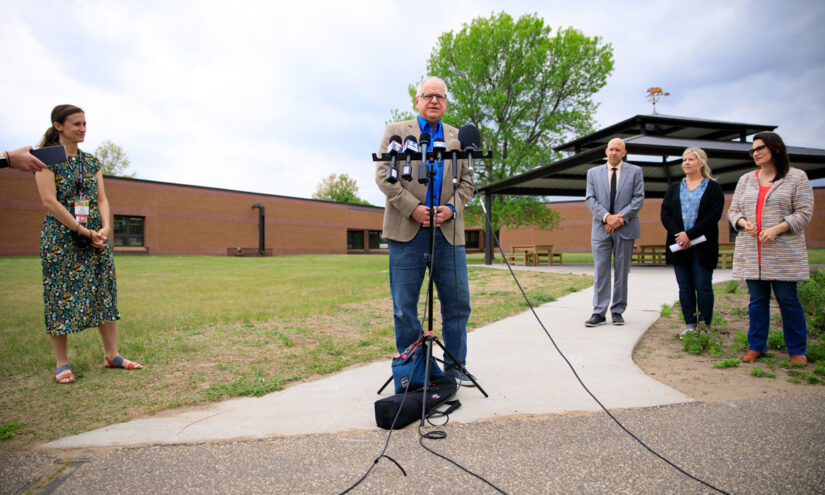Reflecting on the tenets that shape our educational practices is fundamental for …
Minnesota Districts Face Cash Shortage as $2B in New School Funding is Introduced
Carlos Changemaker

Minnesota’s House, Senate, and governor’s office, all Democrats, celebrated the passage of a K-12 education finance bill last spring, touting the “historic” “more than $2.2 billion” in new spending for public schools, along with a plethora of initiatives aimed at transforming the education system for students and teachers. However, now that the dust has settled, districts statewide are grappling with the reality of massive budget cuts, which may necessitate layoffs or the closing of schools.
Minnesota schools are facing a perfect storm of financial challenges. Firstly, they are dealing with the end of COVID recovery aid, which has provided a financial cushion during the pandemic. Secondly, many districts have been experiencing declining enrollment for years, resulting in less per-pupil state funding. This combination of factors has pushed school funding to a fiscal cliff, causing panic among district leaders.
Superintendents across Minnesota have expressed their concern about the dire financial situation, especially considering the public’s misconception that schools are flush with cash. This misperception has led to the failure of funding referenda at the ballot box, further depriving districts of much-needed funds.
The hefty infusion of funding for education may seem like a silver lining, but school leaders quickly realized that it comes with strings attached. A significant portion of the $2.2 billion has already been earmarked for various new mandates and programs, leaving districts scrambling to cover other costs. Additionally, new expenses, such as unemployment insurance for bus drivers and other seasonal workers, have further strained district budgets.
While the funding increase is undoubtedly welcomed, it still falls short of addressing the funding gap that has been widening over the past two decades. Adjusted for inflation and recent cost increases, there is still an $800-per-pupil gap in funding compared to 20 years ago.
These financial challenges have had repercussions at the ballot box. In some districts, funding referenda have failed, exacerbating the funding shortfall. The Rochester public school system, for example, lost a technology funding referendum by a mere 318 votes, resulting in school closures and budget cuts. Other districts are also facing the possibility of layoffs and further budget reductions.
As districts grapple with the reality of shrinking budgets, they are also faced with the task of explaining to their communities why the increase in state aid is not enough to stave off the impending cuts. Many districts used federal COVID recovery aid to address immediate needs and boost educator pay, rather than addressing long-standing budget gaps.
The financial challenges facing Minnesota schools are complex and multifaceted. While there has been an increase in funding, it falls short of the funding needed to bridge the gap created by inflation and rising costs over the past two decades. Districts are now left with tough choices, including layoffs and school closures, as they try to balance their budgets.



